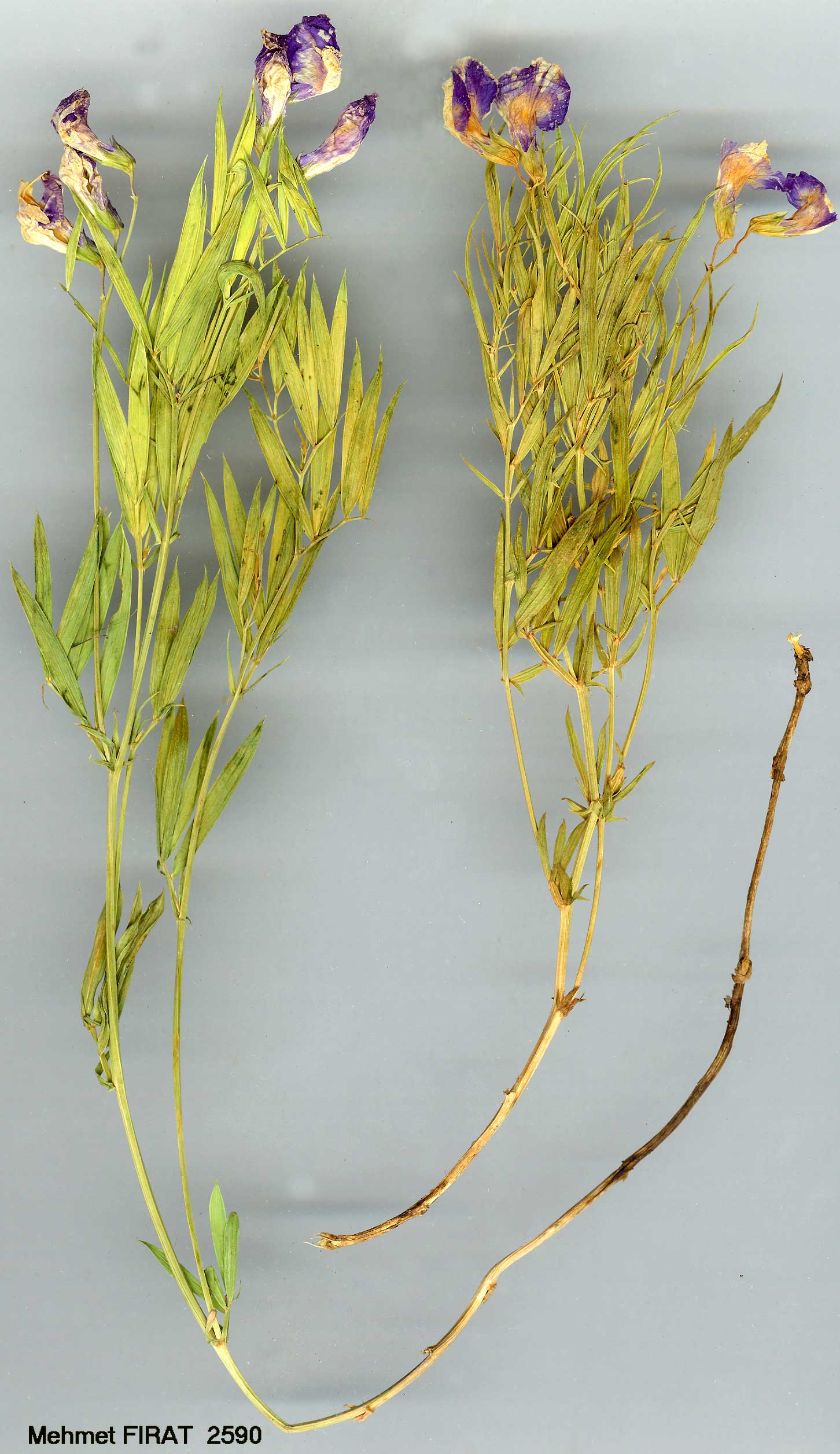| Fabaceae |
|---|

Lathyrus nivalis HAND.-MAZZ. |

Lathyrus nivalis HAND.-MAZZ. |
Lathyrus nivalis HAND.-MAZZ. |
 Lathyrus nivalis HAND.-MAZZ. |
Lathyrus L. |
| L. nivalis Hand.-Mazz. in Ann. Nat. Hofmus. Wien 27:80, t. 2 f. 6 (1913). Figure 3, p. 323. Map 70, p. 339. Ascending-erect perennial, glabrous to sparsely pubescent. Stems wingless, 15-25(-30) cm, arising directly from a woody stock. Median leaves pinnate, aristate; leaflets 2-4(-5)-paired, linear to linear-elliptic, 15-36(-40) x 2-5 mm, 3-parallel-veined; stipules lanceolate to subulate, usually longer than the 2-5(-6) mm petiole. Peduncle 2-4 x the leaves, closely 2-4-flowered. Flowers violet or lilac, 20-24 mm, wings and keel whitish. Calyx 6-8 mm; teeth unequal, the lowest lanceolate f to nearly as long as tube. Style linear, 4-5 mm, scarcely 0.5 mm broad. Legume oblong-linear, 30-35 x 6-7 mm, glabrous. Fl. 6-8. Rocky slopes and screes, usually on limestone, 2400-3200 m. Type: [Turkey B8 Bitlis] Meleto Dagh im Sassun . . . 2600-3150 m, 11 viii 1910, Handel-Mazzetti 2796 (WU!). Mainly S.E. Anatolia; rare in Anti-Taurus. B7 Tunceli: Munzur Da. above Ovacik, 2400-2650 m, D. 31390! B9 Van: Güzeldere Tepe 20 km NNW of Başkale, 2900 m, Cheese & Watson 1545 (leaflets broad)! Bitlis: Pelli Da. above Pelli, 2590 m, D. 22458! C1O C10 Tepe, 3200 m, D. 24067! C6 Maraş: Nuruhak Da., 2400 m, Stn. & Hend. 5654! Endemic? Ir.-Tur. element. L. atropatanus (Grossh.) irj. (illustrated in Flora Azerbaijana 5: t. 50, 1954), described in flower from Nakhichevan in S. Transcaucasia, is evidently very close to L. nivalis, and may even be .conspecific; it apparently differs mainly in its dense adpressed indumentum, but no material has been seen. L. nivalis is well distinguished from L. karsianus by its low stature, long few-flowered peduncles, and short broad legumes - the latter distinguishing it from all other Turkish species in the group. |